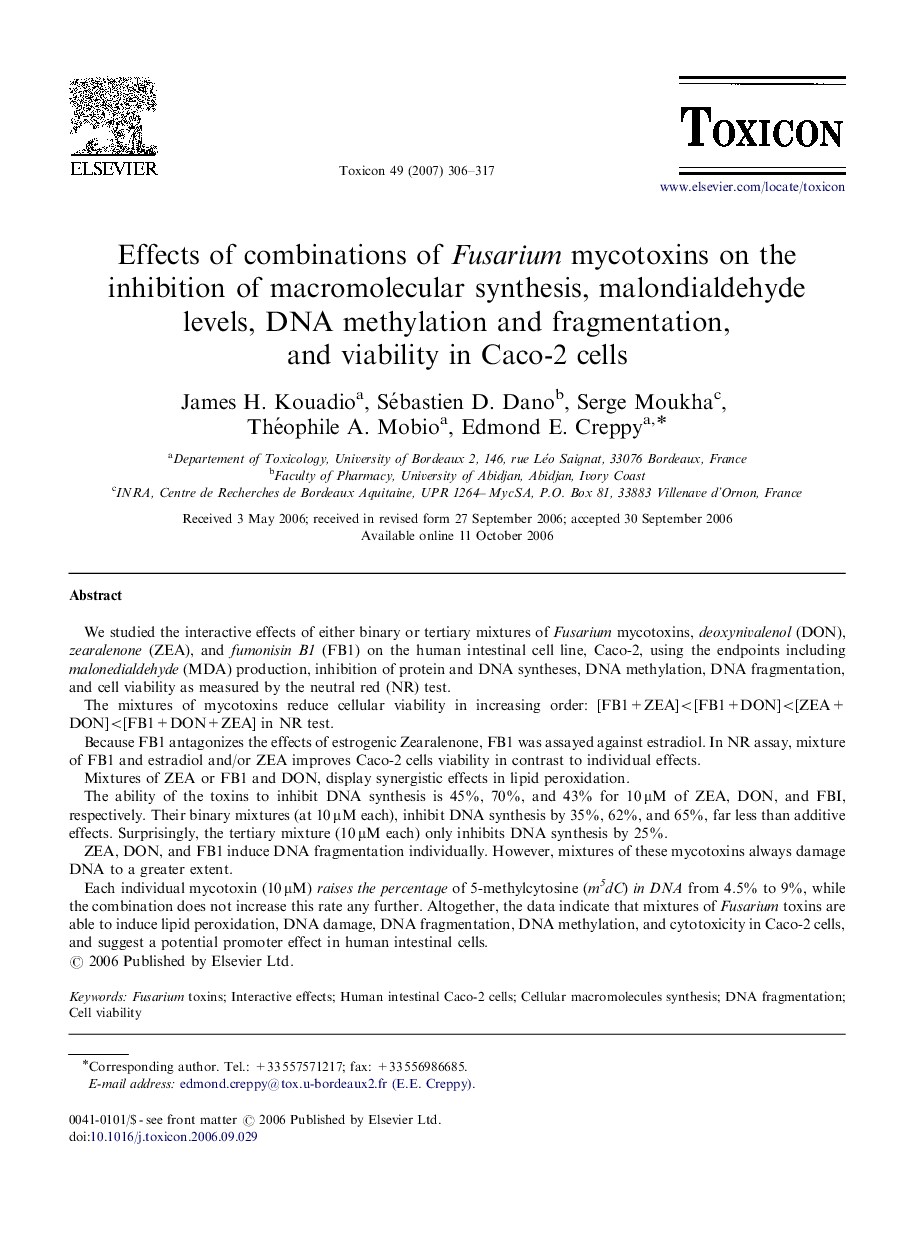| Article ID | Journal | Published Year | Pages | File Type |
|---|---|---|---|---|
| 2066154 | Toxicon | 2007 | 12 Pages |
We studied the interactive effects of either binary or tertiary mixtures of Fusarium mycotoxins, deoxynivalenol (DON), zearalenone (ZEA), and fumonisin B1 (FB1) on the human intestinal cell line, Caco-2, using the endpoints including malonedialdehyde (MDA) production, inhibition of protein and DNA syntheses, DNA methylation, DNA fragmentation, and cell viability as measured by the neutral red (NR) test.The mixtures of mycotoxins reduce cellular viability in increasing order: [FB1+ZEA]<[FB1+DON]<[ZEA+DON]<[FB1+DON+ZEA] in NR test.Because FB1 antagonizes the effects of estrogenic Zearalenone, FB1 was assayed against estradiol. In NR assay, mixture of FB1 and estradiol and/or ZEA improves Caco-2 cells viability in contrast to individual effects.Mixtures of ZEA or FB1 and DON, display synergistic effects in lipid peroxidation.The ability of the toxins to inhibit DNA synthesis is 45%, 70%, and 43% for 10 μM of ZEA, DON, and FBI, respectively. Their binary mixtures (at 10 μM each), inhibit DNA synthesis by 35%, 62%, and 65%, far less than additive effects. Surprisingly, the tertiary mixture (10 μM each) only inhibits DNA synthesis by 25%.ZEA, DON, and FB1 induce DNA fragmentation individually. However, mixtures of these mycotoxins always damage DNA to a greater extent.Each individual mycotoxin (10 μM) raises the percentage of 5-methylcytosine (m5dC) in DNA from 4.5% to 9%, while the combination does not increase this rate any further. Altogether, the data indicate that mixtures of Fusarium toxins are able to induce lipid peroxidation, DNA damage, DNA fragmentation, DNA methylation, and cytotoxicity in Caco-2 cells, and suggest a potential promoter effect in human intestinal cells.
